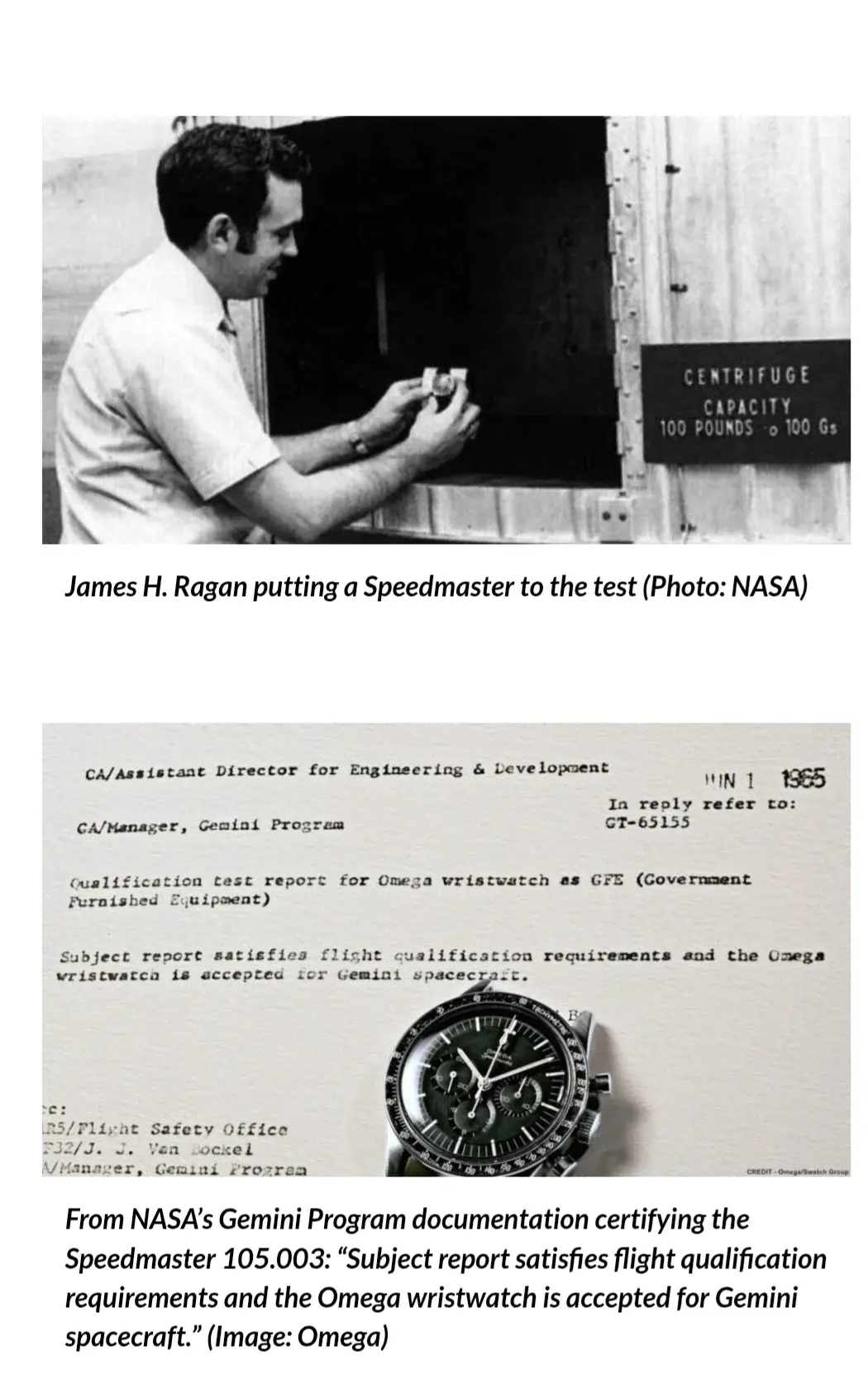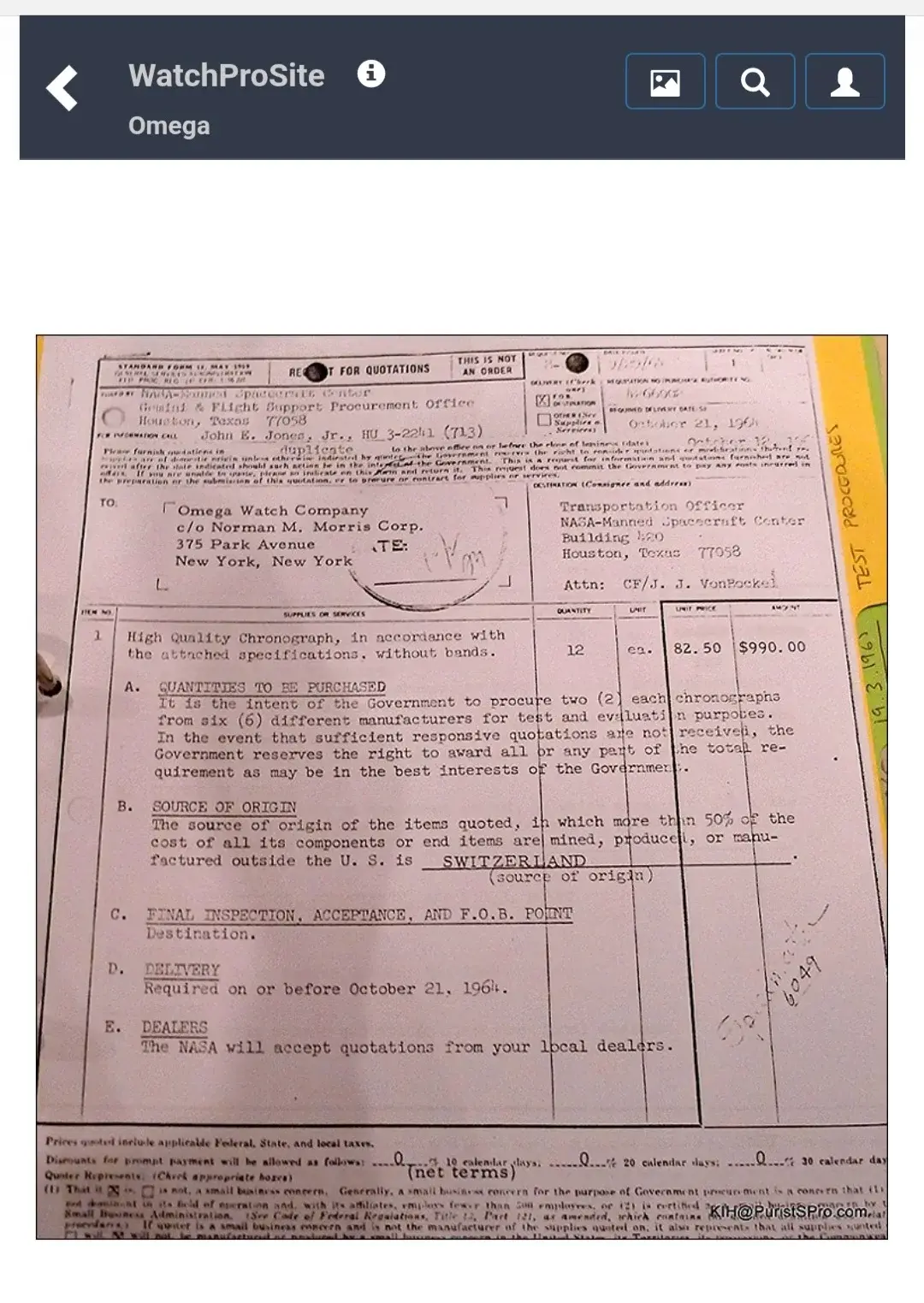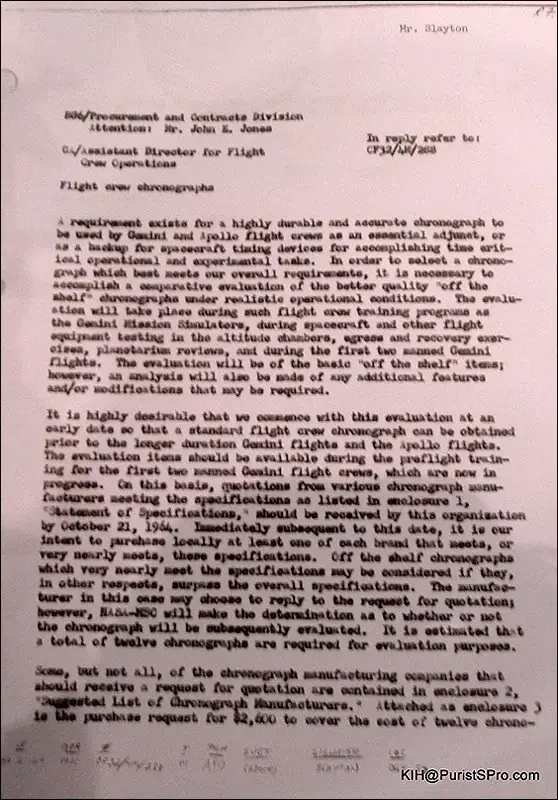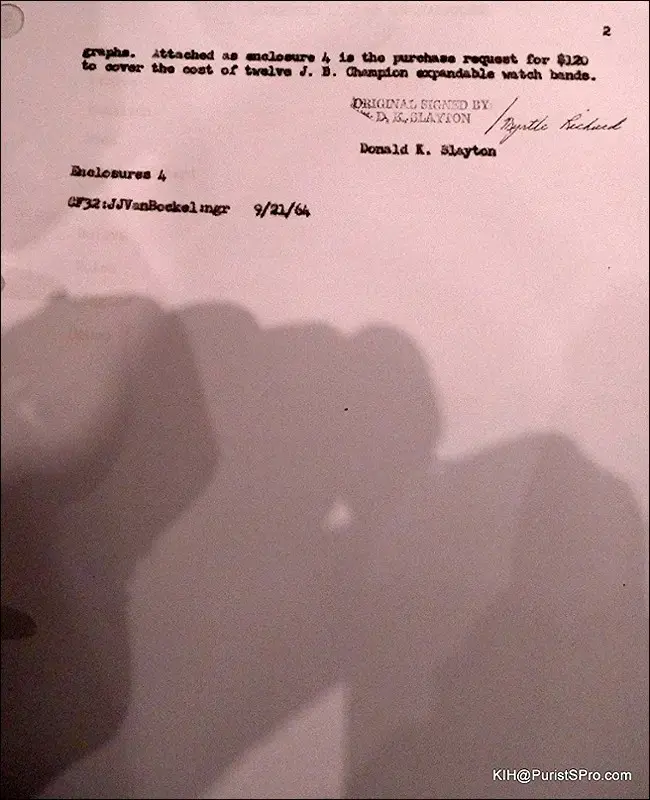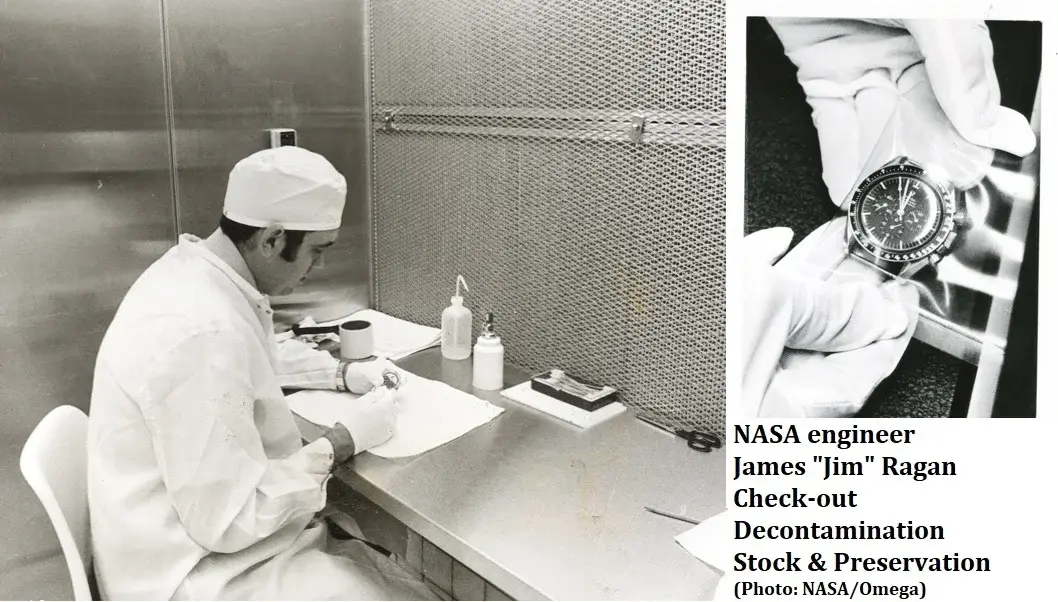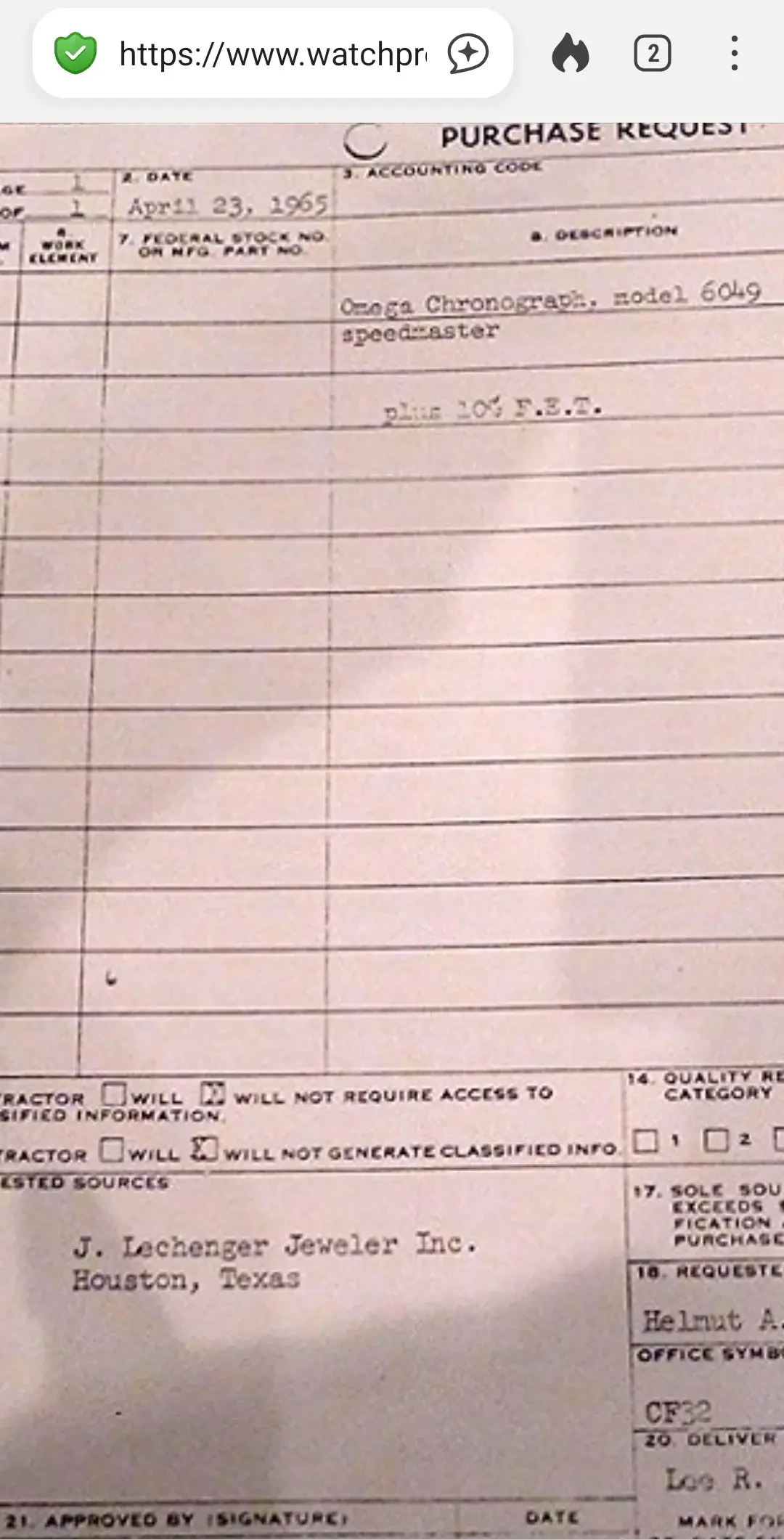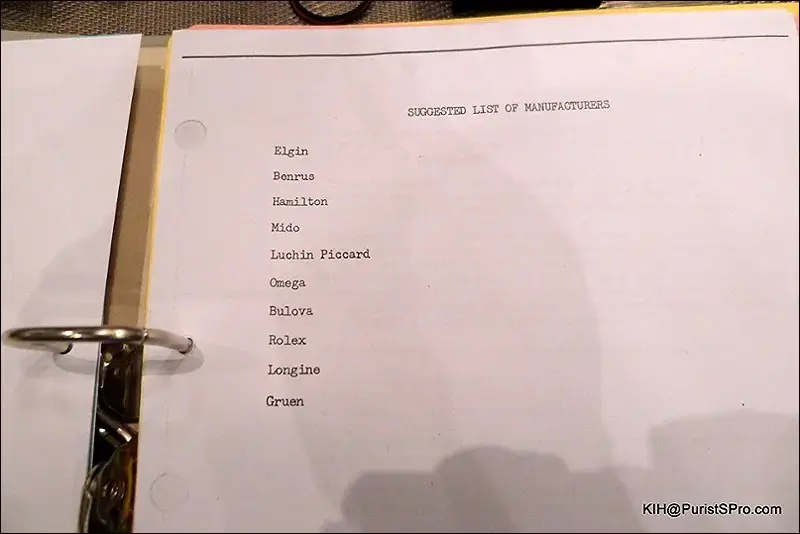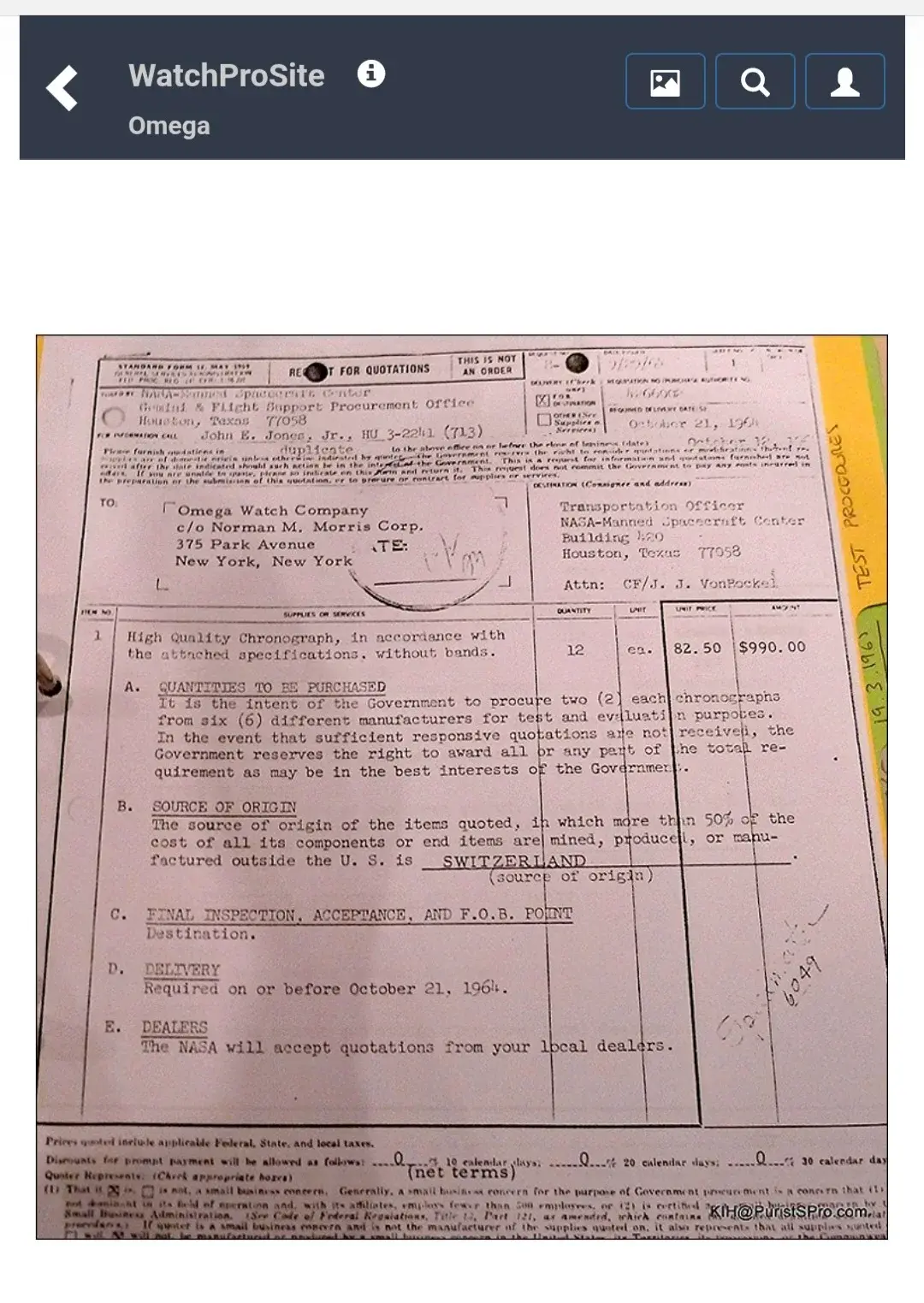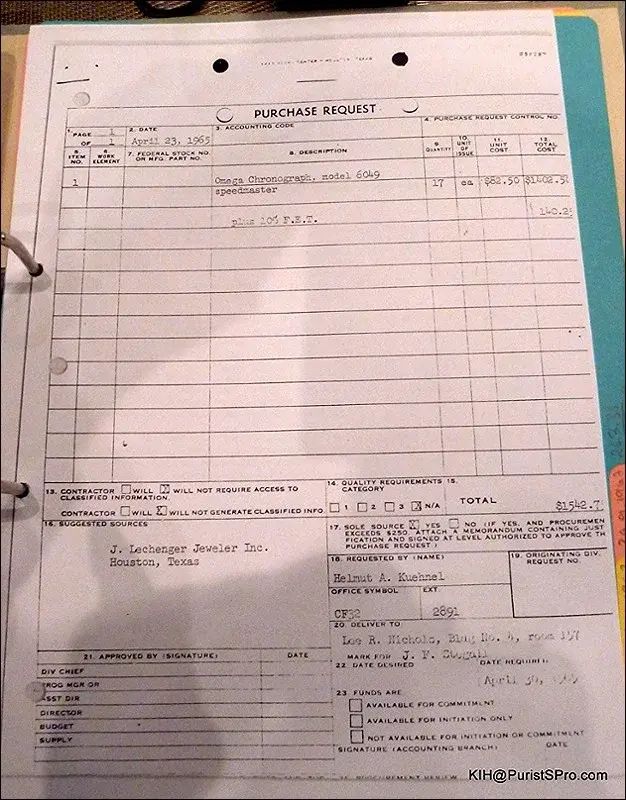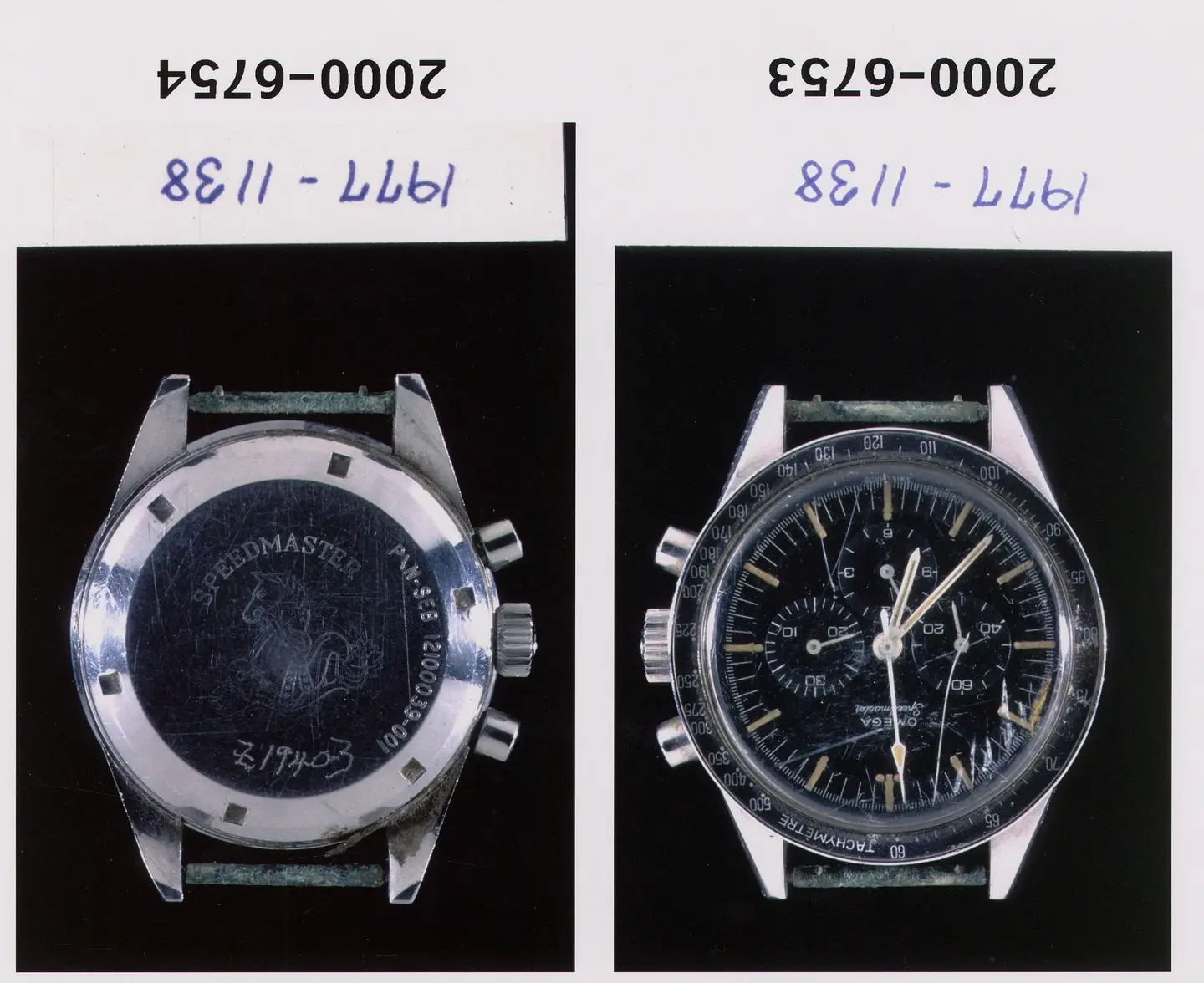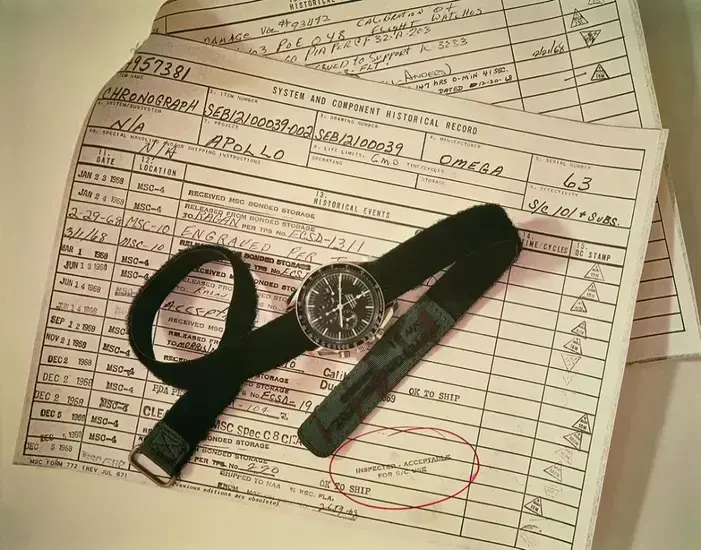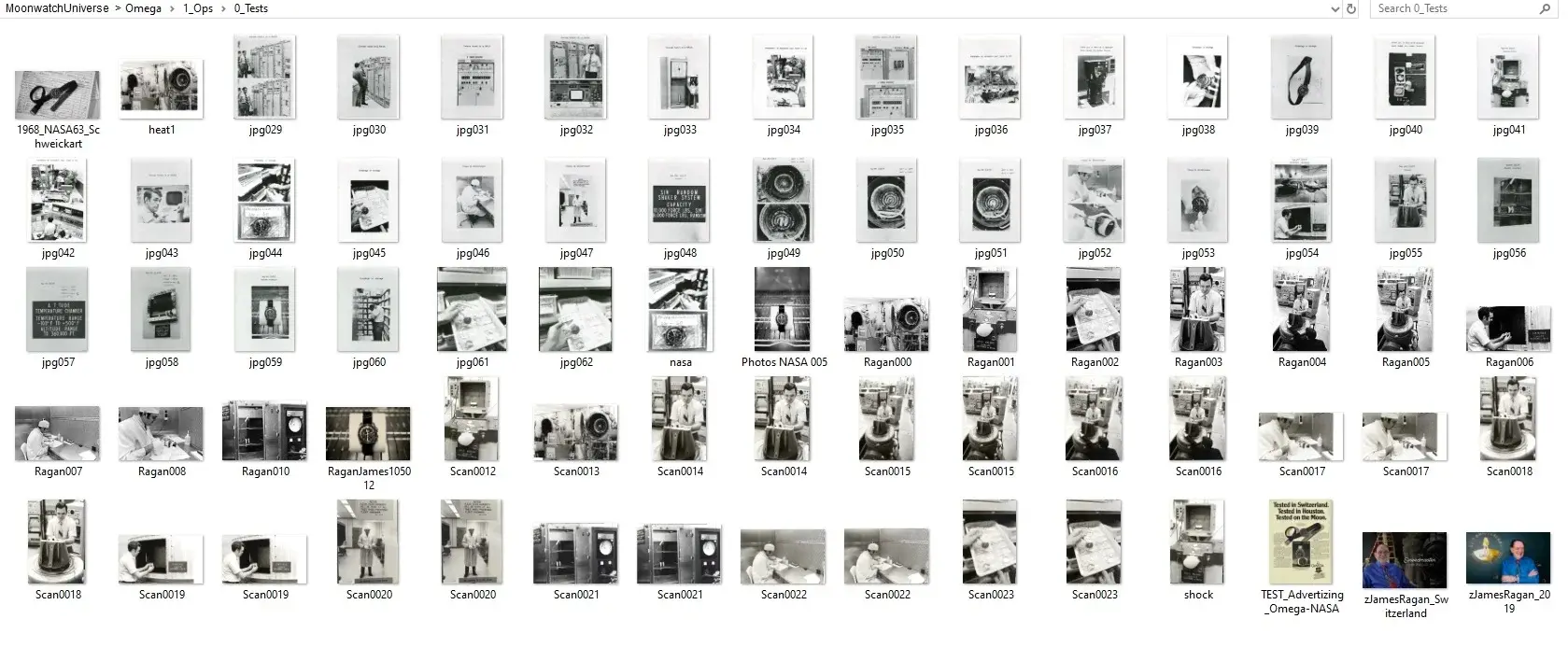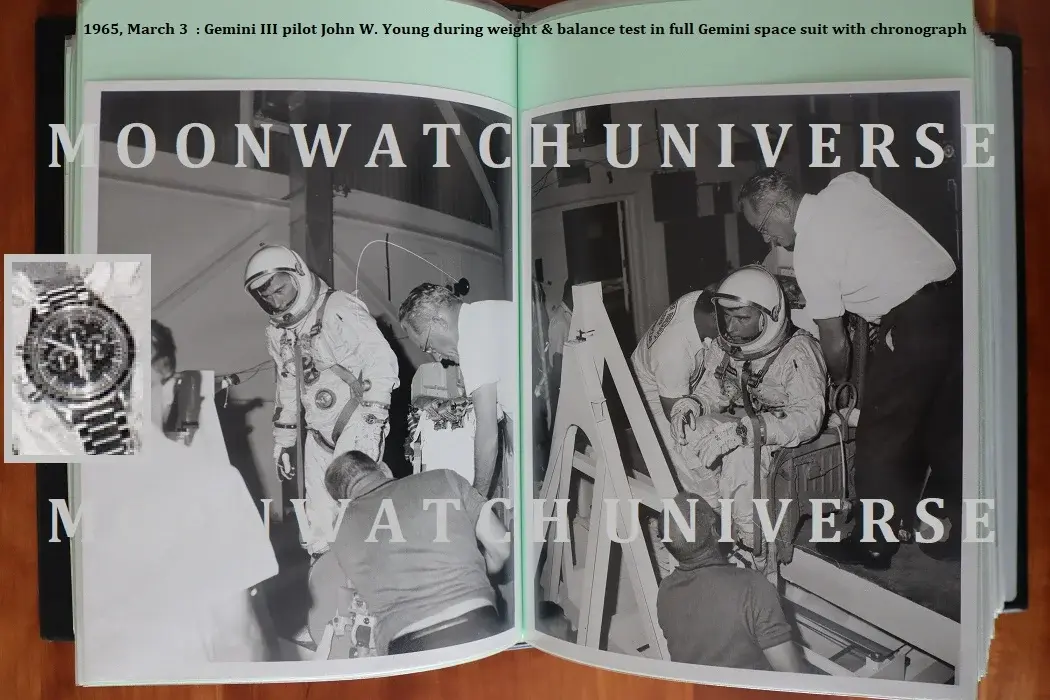pdxleaf
·As is well known, NASA tested Speedmasters from October 21st, 1964 to March 1st, 1965.
Does anyone know what happened to them? Do they still exist? Has any popped up?
NASA tested the 105.003. But which reference? Was it the 105.003-64?
Does anyone know the serial numbers of the watches that were tested?
Curious.
Photos from Revolution
https://revolutionwatch.com/what-wa...before-the-speedmasters-flight-qualification/
Looks like NASA initially intended to procure two Speedmasters without bracelets for testing, per this photo from [WatchProSite]:
https://www.watchprosite.com/omega/...ogram--repost-from-2016-/677.1054643.7607273/
According to the article, they bought three watches. "This is the first time you hear this. One each was kept as back-up, one each was for testing, and one each was given to the astronauts."
Slayton's Request to find a watch for the astronauts:
Source: WatchProSite
Does anyone know what happened to them? Do they still exist? Has any popped up?
NASA tested the 105.003. But which reference? Was it the 105.003-64?
Does anyone know the serial numbers of the watches that were tested?
Curious.
Photos from Revolution
https://revolutionwatch.com/what-wa...before-the-speedmasters-flight-qualification/
Looks like NASA initially intended to procure two Speedmasters without bracelets for testing, per this photo from [WatchProSite]:
https://www.watchprosite.com/omega/...ogram--repost-from-2016-/677.1054643.7607273/
According to the article, they bought three watches. "This is the first time you hear this. One each was kept as back-up, one each was for testing, and one each was given to the astronauts."
Slayton's Request to find a watch for the astronauts:
Source: WatchProSite
Edited:
